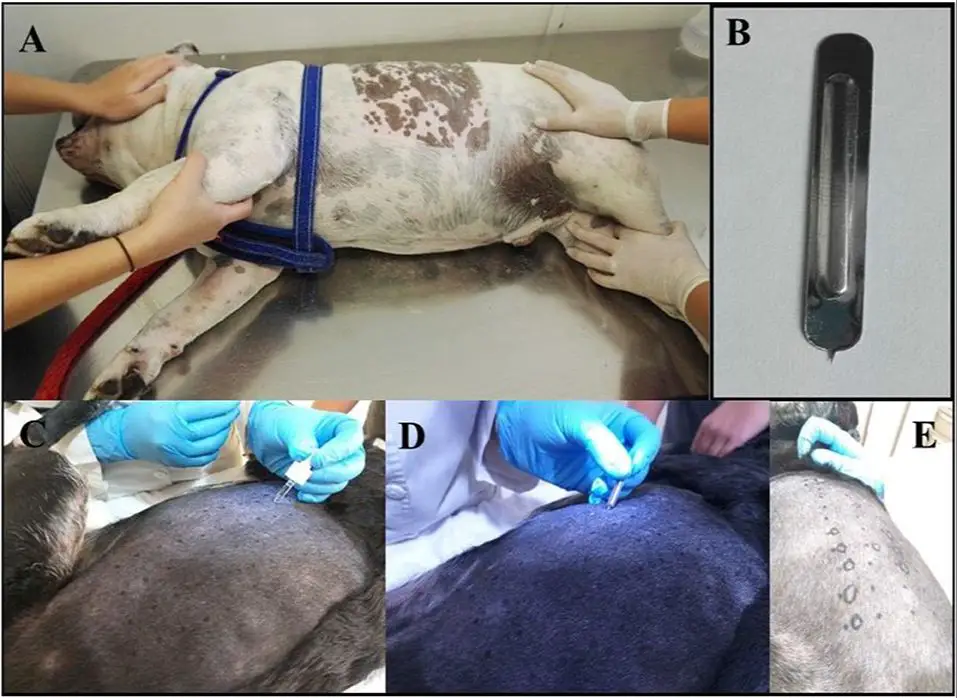Introduction
Many people love dogs, but allergies can make owning certain breeds challenging. Dog allergies are caused by proteins found in their dander (shed skin flakes), saliva, and urine. Some breeds tend to be more problematic for allergy sufferers because they shed more dander or produce more of the allergy-causing proteins.
Certain dog breeds are known for being hypoallergenic and better suited to people with allergies. However, no dog is 100% non-allergenic. Any dog can cause allergy symptoms in people sensitive to dogs. But some breeds shed less fur and dander, producing fewer of the proteins that cause allergies.
This article provides an overview of dog breeds that typically cause more allergic reactions versus those often recommended for allergy sufferers. We’ll also share tips for managing dog allergies through medical treatments, grooming, and home cleaning.
What Causes Dog Allergies
Dog allergies are caused by an overreaction of the immune system to proteins found in a dog’s dander, saliva, or urine. Some of the most common allergens that trigger symptoms are:
- Dander – microscopic flecks of skin that dogs shed. Dander floats in the air and can collect on surfaces like furniture and clothing.
- Saliva – proteins secreted in a dog’s saliva can cause allergy issues when saliva dries and turns into dust that contains allergens.
- Urine – some people have allergic reactions to protein compounds found in a dog’s urine. This exposure often happens when urine gets on a dog’s coat and then transfers to human skin or clothes.
When someone with dog allergies is exposed to these substances, their immune system identifies the proteins as a threat and releases antibodies like histamine to attack them. This causes allergy symptoms like sneezing, watery eyes, coughing, and skin irritation in response.
Breeds That Tend to Be Worse for Allergies
Certain dog breeds are known to be more problematic for people with allergies. This is because some breeds shed more, produce more dander, or produce more allergy-causing proteins in their saliva. The breeds that are generally not recommended for allergy sufferers include:
Labrador Retrievers
Labrador Retrievers are one of the most popular dog breeds, but they tend to be bad news for allergy sufferers. Labs shed a lot year-round and produce a lot of dander. Their short, dense coat also traps everything it touches, including pollen and other allergens from outside. Labs also salivate quite a bit, spreading allergy-causing proteins everywhere they lick.

German Shepherds
German Shepherds also have heavy shedding and produce significant dander. Their long coat catches lots of pollen and other environmental allergens when outside. German Shepherds also tend to lick and slobber more than other breeds, spreading their allergenic saliva on surfaces around the house.
Golden Retrievers
Golden Retrievers have a long, thick double coat that sheds constantly, producing copious amounts of dander. Goldens love to be outside, where their feathered fur easily captures weeds, grass, and pollen. They also salivate at above-average levels. With their active and affectionate nature, Golden Retrievers spread allergens everywhere in a home.
Poodles
Although Poodles are often thought of as hypoallergenic, they can still cause problems for some. Poodles do shed minimally and produce less dander than other breeds. However, their dense curly coat traps dander and other allergens close to the skin where they are more concentrated. Poodles also produce saliva and urine that contain allergens. Regular grooming and bathing is essential for reducing allergens in Poodles.
Breeds That Tend to Be Better for Allergies
When it comes to dog breeds that are generally better for people with allergies, there are a few top choices:
Poodles – Poodles have a single coat that is non-shedding. This means they produce less dander, which is what causes most dog allergies in people. The poodle’s dense, curly coat traps dander so that less gets released into the air. Standard poodles, miniature poodles, and toy poodles are all hypoallergenic.
Portuguese Water Dogs – Like poodles, Portuguese water dogs have a single hypoallergenic coat that doesn’t shed much. Their tight curls also catch dander before it can become airborne. Their nonshedding qualities make Portuguese water dogs a go-to choice for allergy sufferers.
Maltese – The Maltese has a long, silky, and hypoallergenic white coat that sheds very little. Their hair-like coat means less dander production. Under regular grooming, Maltese dogs release very few allergens into the home.

Schnauzers – Standard schnauzers, miniature schnauzers, and giant schnauzers shed minimally thanks to their wiry, hypoallergenic coat. Frequent brushing can further reduce loose hairs and allergy-causing dander particles. Their coat also makes schnauzers less likely to pick up irritants from outside.
Tips for Managing Allergies
If you have dog allergies but still want to keep your furry friend, there are some things you can do to help minimize allergy symptoms:
Bathe your dog regularly – Bathing your dog at least once a week can significantly reduce the amount of allergy-causing dander on their fur and skin. Be sure to use a mild dog shampoo. Over-bathing can dry out their skin.
Vacuum frequently – Vacuuming twice a week can help remove pet dander from carpets, furniture, and other home surfaces before it becomes airborne. Use a vacuum with a HEPA filter for best results.
Use air filters – HEPA air purifiers can filter out pet dander and other allergens, improving indoor air quality. Place air filters in rooms where you spend the most time with your dog.
Try allergy medication – Oral antihistamines like Zyrtec, Claritin or Allegra can help counteract allergy symptoms. Nasal sprays like Flonase can also help reduce allergic reactions when exposed to pet dander.
With some extra care and management, dog allergies don’t have to mean giving up your furry companion. Work with your doctor to find the right treatment plan for you.
Getting Tested for Dog Allergies
If you suspect you may be allergic to dogs, allergy testing is recommended to confirm. There are a few main allergy tests that can determine if dogs trigger an allergic response for you:
Skin Prick Tests
Skin prick testing is the most common allergy test. Small amounts of allergen extracts are pricked or scratched into the skin, usually on the arms or back. If you’re allergic to that substance, a small hive will appear within 15 minutes. This test is generally accurate and results come quickly.

Blood Tests
A blood test can measure antibodies to specific allergens. Blood is drawn and sent to a lab for analysis. Blood tests are less sensitive than skin prick tests but can be useful for people who can’t stop taking antihistamine medications leading up to skin testing.
Trial Exposure
If other allergy testing is inconclusive, a supervised trial exposure to a dog may be done. This would take place at an allergist’s office so any reactions can be monitored and treated immediately. Trial exposure provides real-world evidence of an allergy but does carry risk.
Getting an accurate allergy test is an important first step if you need to determine if dogs trigger allergies for you. This can help guide discussions with your doctor about treatment options and whether dog ownership is advisable for your situation.
Allergy Shots and Medications
There are several medication options that can provide allergy symptom relief when living with a dog. Immunotherapy, also known as allergy shots, can help desensitize your immune system to dog allergens over time. These customized shots expose you to tiny amounts of dog allergen extracts, with the doses gradually increased to build tolerance. Though the shots take months to reach full effectiveness, many people find them beneficial for reducing allergy symptoms long-term.
Oral medications like antihistamines, such as Zyrtec, Claritin or Allegra, can block histamines that cause allergy symptoms. Though effective for some, antihistamine side effects like drowsiness are common. Nasal sprays containing corticosteroids reduce inflammation in the nasal passages and can relieve sneezing, itchy nose and congestion. Eye drops like Pataday and Zaditor can ease itchy, watery eyes due to dog allergies. Discuss your medication options with an allergist to find the right treatments to relieve your specific symptoms.
Other Ways to Reduce Allergens
In addition to medications, allergy shots, and choosing low-allergen dog breeds, there are some other tactics you can try to reduce allergens in your home to minimize allergy symptoms.
Frequent grooming and bathing of your dog can help reduce dander and allergens on their fur. Brushing and combing them regularly collects loose hairs before they can circulate in your home. Bathing your dog once a week or every two weeks can wash away allergens on their skin and coat.
Using high efficiency air purifiers throughout your home can help capture allergens like dander so they don’t get inhaled. Look for ones with HEPA filters designed for pet allergens.

Washing your bedding, blankets, and any upholstered furniture your dog lays on weekly in hot water can help remove allergens that accumulate. This is especially important for your bedroom if you allow your dog to sleep in there.
Keeping your dog out of your bedroom fully and closing the door can reduce nighttime allergy symptoms and allow you to breathe easier while sleeping. Place bedding in areas of the home your dog does not have access to.
With some preparation and diligence, those with dog allergies can still find ways to welcome a dog into their home and family.
Deciding Whether to Get a Dog with Allergies
If you suffer from dog allergies but still want a canine companion, don’t despair. With some careful consideration, you may still be able to welcome a dog into your home.
When deciding if getting a dog is right for you, consider the following:
-
Breed – Certain breeds like poodles and schnauzers tend to be better for allergy sufferers. Opt for a low-shedding breed with hair rather than fur.
-
Lifestyle changes – Keep dogs out of bedrooms, vacuum and wash bedding regularly, bathe dogs weekly, and brush them outside to reduce dander and allergens in the home.
-
Severity of allergy – If your allergies are mild, medications and changes may be enough to manage symptoms. But severe allergies may make having a dog very challenging.
See an allergist to be tested so you understand your allergy severity. This will help determine if having a dog is feasible. With preparation and some compromises, you can still enjoy life with a furry friend.
Conclusion
In summary, while some dog breeds like Poodles and Schnauzers tend to be better for people with allergies, no dog breed is completely non-allergenic. Allergies are caused by proteins found in a dog’s dander, saliva, and urine. Severity of allergic reaction can vary between different breeds and individual dogs. Getting allergy tested and working with your doctor on medications and shots can help manage symptoms. Focusing on bathing, grooming and cleaning habits can also reduce allergens in the home. Ultimately, those with dog allergies need to weigh the benefits of dog ownership against the challenges of managing their symptoms. With precautions and medical care, living happily with dogs is possible for many allergy sufferers.